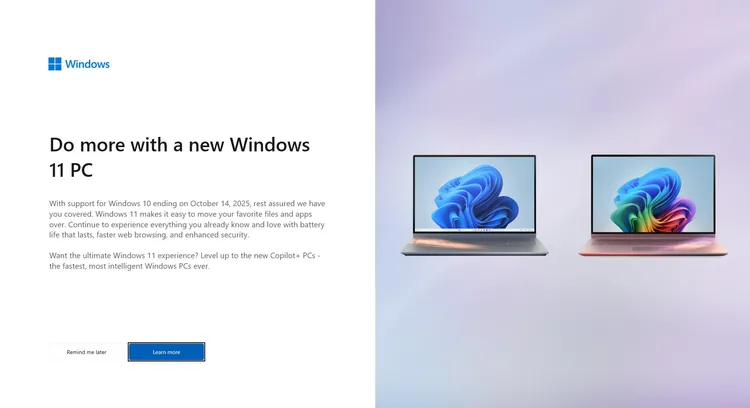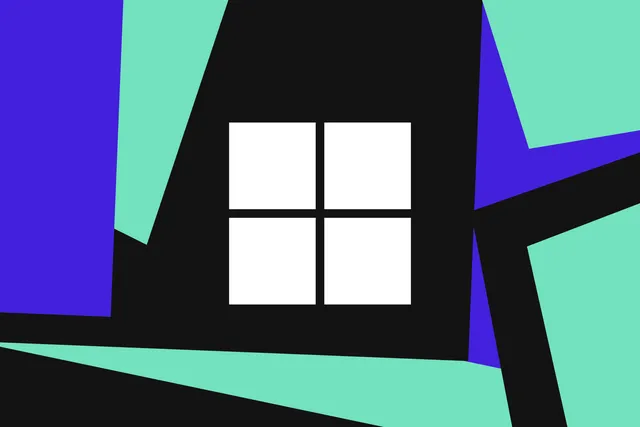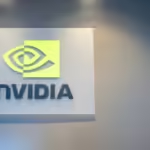Windows 10 is going end of support next year and Microsoft is now trying to convince people to buy Copilot Plus PCs.
Microsoft is ramping up efforts to encourage Windows 10 users to upgrade to Windows 11 or invest in a new PC, as the October 2025 end-of-support deadline inches closer. In its latest push, the tech giant has introduced full-screen prompts aimed at enticing users to make the leap to newer devices running Windows 11. This follows earlier alerts warning users of the impending end-of-life for Windows 10.
Full-Screen Prompts: A Strategic Nudge
Over the weekend, many Windows 10 users began encountering these full-screen prompts. Microsoft’s messaging is clear: upgrading to a new Windows 11 PC means accessing cutting-edge features and tools like the AI-powered Copilot. One prompt boldly proclaims, “Do more with a new Windows 11 PC,” while another suggests, “Level up to the new Copilot Plus PCs for the ultimate Windows 11 experience.”

Clicking the accompanying “Learn More” link directs users to a promotional page featuring an array of shiny new Windows 11-compatible PCs. However, these prompts conspicuously omit a critical detail: Windows 10 can still be used securely beyond October 14, 2025, albeit with limitations and a cost.
Extended Security Updates: A Safety Net for the Reluctant
For the first time, Microsoft is offering Extended Security Updates (ESU) to individual consumers. This option allows users to extend the life of their Windows 10 system for $30 annually, offering a sense of security even after mainstream support ends. While this move provides a fallback for those unwilling to transition, it underscores Microsoft’s determination to shift users away from the older OS.
Businesses, on the other hand, can purchase up to three years of ESUs, ensuring more flexibility during the transition to newer systems.
A Familiar Strategy with a Modern Twist
Microsoft’s aggressive upgrade campaigns are nothing new. Longtime Windows users may recall the relentless push to migrate from Windows 7 and 8.1 to Windows 10. The difference this time? The hardware barrier. Unlike previous transitions, Windows 11 has stringent hardware requirements. Only devices equipped with CPUs released from 2018 onward officially support the new OS, meaning millions of older PCs can’t upgrade without a complete hardware refresh.
This limitation explains why the latest prompts emphasize buying a new device rather than upgrading an existing one. For many users, their current hardware simply isn’t compatible with Windows 11, leaving them little choice but to consider investing in a modern machine.
Mixed Messages and a Complicated Future
While Microsoft’s prompts are designed to encourage upgrading, the company’s ongoing updates to Windows 10 muddy the waters. After initially announcing the end of major updates for Windows 10 in 2023, Microsoft surprised many by reopening its beta program for the OS in mid-2024. This move introduced new features and improvements to Windows 10—an unusual step for an operating system supposedly in its twilight years.
Adding to the confusion, Windows 10 adoption still significantly outpaces that of Windows 11. Despite Windows 11 briefly becoming the most popular OS for PC gaming on Steam earlier this year, many users and businesses remain firmly rooted in Windows 10, citing compatibility, stability, and familiarity as key reasons.
The Road Ahead: Upgrade, Extend, or Switch?
Microsoft’s campaign reflects a broader strategy to steer users into its ecosystem of modern hardware and services. By promoting features like Copilot and positioning Windows 11 as a productivity powerhouse, the company aims to showcase the tangible benefits of upgrading. However, with millions of devices locked out of official Windows 11 support and a significant portion of users hesitant to leave Windows 10, the road ahead isn’t without obstacles.
For Windows 10 users, the options are clear:
- Upgrade to Windows 11 (if hardware permits): Unlock access to new features and tools designed for modern workflows.
- Purchase Extended Security Updates: Stay secure on Windows 10 for a fee, but miss out on future innovations.
- Invest in a new Windows 11 PC: Ensure long-term compatibility and leverage the latest technology.
As the clock ticks toward October 2025, Microsoft’s efforts to coax, nudge, and incentivize users to upgrade will only intensify. Whether through full-screen prompts or feature showcases, one thing is certain: the company is betting big on Windows 11, and it’s determined to bring as many users along for the ride as possible.
The question is, are you ready to take the leap?










